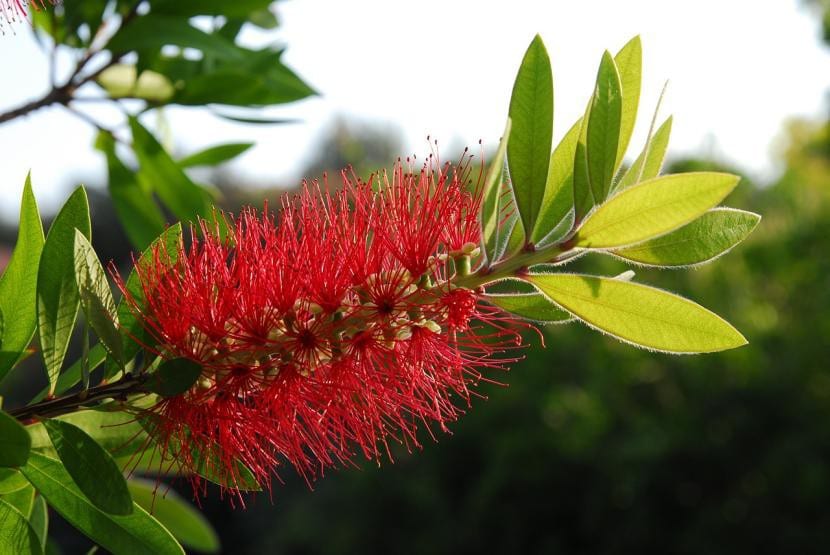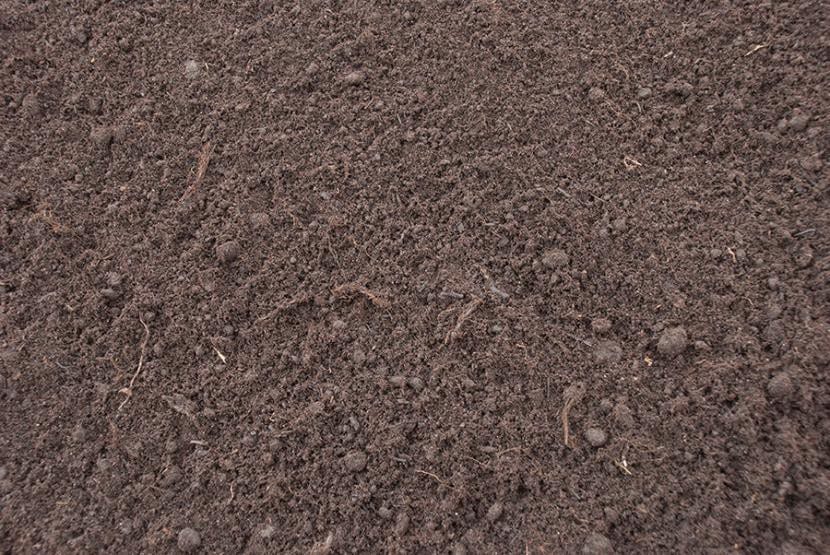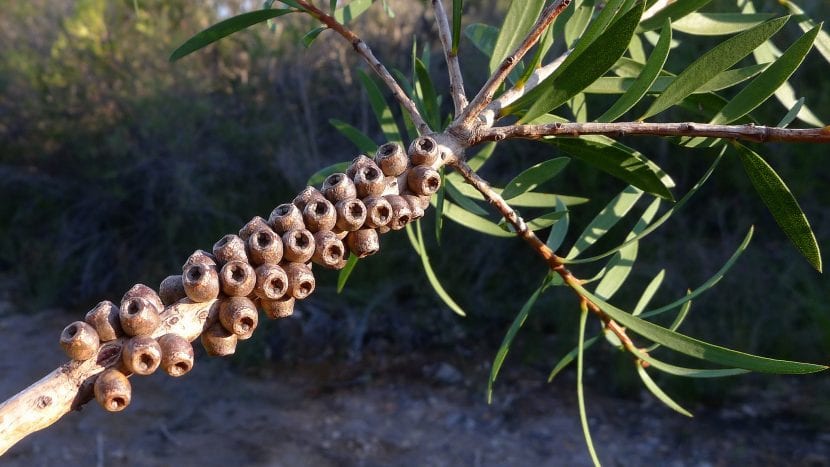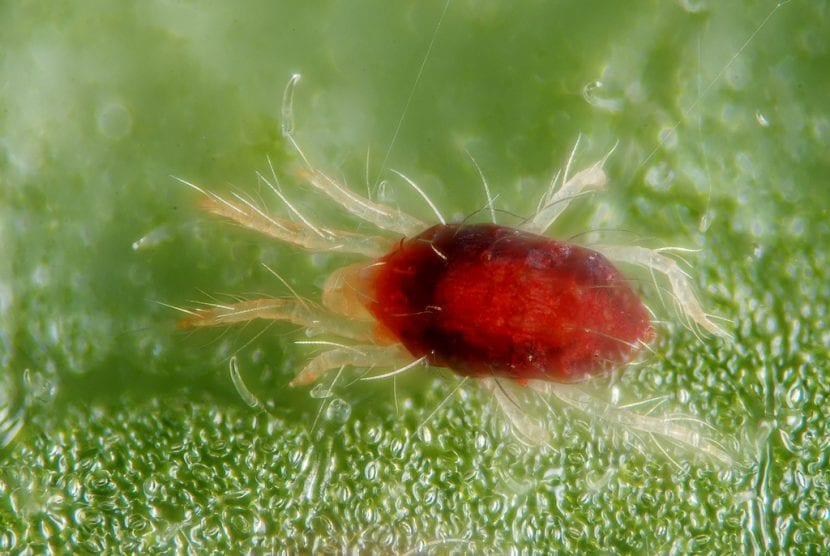
El Callistemon citrinus It is a beautiful shrub or tree ideal to have in a pot or in the gardens. Its characteristic inflorescence is very reminiscent of a tube and pipe cleaner, which is why one of the common names is precisely tube cleaner.
With a minimum of care it is very easy to have it perfect throughout the year, so if you want to know everything about it, you can't miss this special.
What is its origin and its characteristics?

Image - Plantmaster.com
Our protagonist it is an evergreen plant (remains evergreen) native to Australia, specifically Queensland, New South Wales and Victoria. Its scientific name is Callistemon citrinus and the common ones are pipe cleaners, brush tree or red swab.
Reaches a height of 2 to 4 meters, and has a rounded crown with leaves that are 3 to 7cm long by 5-8mm wide. The flowers, which sprout in spring, are grouped in spike-shaped inflorescences and their stamens are red, purple-red or lilac in color.
Its growth rate is not very fast, which will allow you to control its development much more easily. In addition, as it does not have an invasive root system, you can plant it even in small gardens or in pots.
How do you take care of yourself?
If you want to get a copy, we recommend providing the following care:
Location
It is important that you place it outside, full sun. It is not adapted to living indoors or in shady places.
Earth

- Garden: is indifferent. It grows well even in nutrient-poor limestone soils.
- Flower pot: universal growing medium (you can get it here) mixed with 30% perlite (you can buy it here).
Irrigation
It must be watered every 2-3 days in summer, and somewhat less often the rest of the year.. If it is kept in a pot, I advise putting a plate under it during the warmer months of the year so that the substrate remains humid for longer.
Subscriber
From spring to fall you can pay it with organic fertilizers, such as guano, herbivorous animal manure, vegetables that can no longer be eaten, tea bags, wood ashes or compost.
Planting or transplanting time
In spring when the risk of frost has passed. You can also in autumn if you live in a mild climate.
Pruning
You can prune your Callistemon citrinus after flowering, trimming the stems that have grown in excess and those that look weak, diseased or dry.
Multiplication

It is multiplied by seeds and by cuttings with wooden leaves. Let's see how to proceed in each case:
Seeds
To multiply the tube cleaner by seeds you have to follow this step by step:
- First, a 10,5cm diameter pot is filled with universal growing medium mixed with 20-30% perlite.
- Second, it is watered so that it is well soaked.
- Third, a maximum of two seeds are placed and a little copper or sulfur is sprinkled. Thus, the appearance of fungi is avoided.
- Fourth, they are covered with a thin layer of substrate and watered, this time with a sprayer.
- Fifth, the pot is placed outside, in full sun.
Then there will only be watering whenever necessary, preventing the substrate from remaining dry. If everything goes fine, will germinate in 2-4 weeks.
Cuttings
To multiply it by cuttings, you have to cut a branch of about 30-40cm, impregnate the base with homemade rooting agents y plant it in a pot with vermiculite. Placing it then in semi-shade and keeping the substrate moist, it will emit its own roots in about 1 month.
Pests

It can be affected by the following pests:
- Red spider: it is a red colored mite that attaches itself to the leaves, from where it feeds on its cells. It is fought with acaricides.
- Aphid: they are parasites that measure less than 0,5cm that can be yellow, green or brown. They adhere to green leaves and stems, although they can be controlled with yellow sticky traps (you can get these here).
- Cotton mealybugonosa: it is a cottony-looking parasite that feeds on the cells of the leaves. They can be removed by hand or with an anti-scale insecticide.
Rusticity
El Callistemon citrinus withstands cold and frost up to -7ºC.
What uses does it have?
Ornamental
It is a very decorative plant, which can be used both as a more or less isolated specimen and in groups giving them a hedge shape. It is also very interesting to have in a pot, for example on a balcony or terrace.
Bonsai
Surely you've ever seen a Callistemon bonsai, right? If you didn't buy it out of fear of losing it, now you can overcome that fear with our care guide:
- Location: outside, in full sun.
- Substratum: 70% akadama + 30% kiryuzuna.
- Irrigation: very frequent. Every 1-2 days in summer and every 3-4 days the rest of the year.
- Transplant: every 2 years, in spring.
- Pruning: those branches that have grown in excess have to be trimmed, and those that look sick, weak or dry must be removed.
- Subscriber: with a specific fertilizer for bonsai following the indications specified on the package.
- Rusticity: supports up to -5ºC.
What did you think of the Callistemon citrinus?
Hello, I have one years ago that was abandoned, I removed 40 liters of soil with urine and feline feces, I put root compost and perlite on it. The article is very good, first get to know it to cure it, it is 10 years old, how long does it last approx.?
Hello jhon.
How good that you saved him 🙂
Well, I can't tell you what the life expectancy of this plant is, but comparing its characteristics with other similar plants, it is likely that your specimen will live another 40 or 50 years.
Greetings.
What is the seed of the callistemon?
Hello Daniel.
The seeds will be inside the brown capsules that appear after the flowers. They are very small, light brown in color. Look, you can see them in this link.
Greetings.